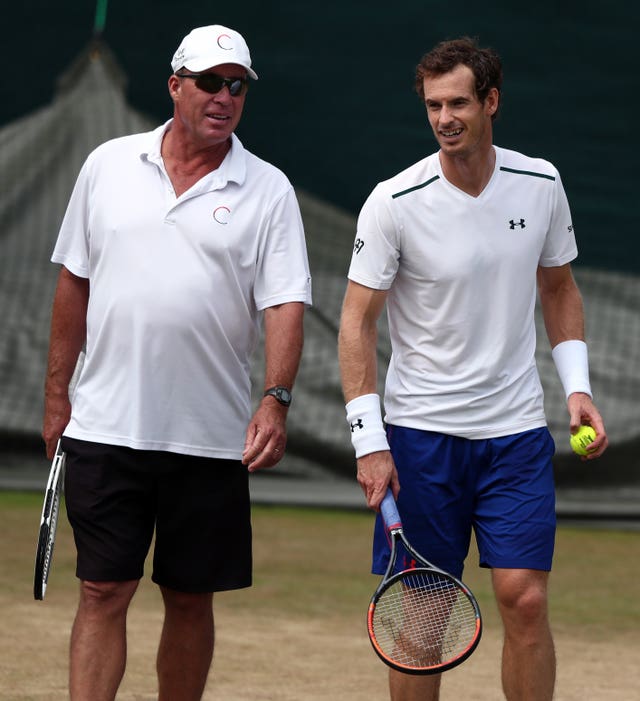Andy Murray poured blood, sweat and tears into a brilliant career that showed British tennis players could be winners.
Driven by a desire to triumph that at times appeared too strong, Murray held his own in arguably the greatest era of men’s tennis and achieved feats not seen from a British man for three quarters of a century.
Having doubted that a grand slam title would come after falling agonisingly short on a succession of occasions, Murray broke his duck at the US Open in 2012 and, the following year, achieved his career-defining feat by winning Wimbledon 77 years on from Fred Perry’s final victory.
Three years later he triumphed again at the All England Club before finishing the season as world number one.
But, just when it seemed he might fully reap the rewards of the years of hard graft, Murray’s body let him down and hip problems nearly brought a premature end to his career.
Channelling the determination that was his trademark on the court, Murray found a way back thanks to a partial hip replacement and returned to the top 50.
But he has been unable to reach the level or achieve the results he craved in recent years and, at the age of 37, Murray has announced he will hang up his racket after this summer’s Olympics.
The Scot will end his career with three grand slam titles, at least two Olympic gold medals and a CV that, while falling well short of Roger Federer, Rafael Nadal and Novak Djokovic, made him part of a universally recognised ‘big four’.
Murray had the perfect motivation as a child growing up in Dunblane – wanting to beat his brother Jamie, who is only 15 months older – and his competitive spirit did not always make for a happy household.
A fiercely proud Scot despite leaving as a teenager, it is a source of immense pride that to many Dunblane is now known as the birthplace of champions rather than for the tragedy that claimed the lives of 16 of the Murray brothers’ fellow primary school pupils.
Murray played many different sports as a child, excelling at football – his maternal grandfather was a professional player – and tennis, where being on court allowed him to spend time with his mother Judy, who was forging a successful career as a coach.
By his early teens, Murray had established himself as one of the best young players in Europe, and a conversation with rival Nadal, who could count on former world number one Carlos Moya as a practice partner, led the Scot to broaden his horizons.
Murray headed off to train in Barcelona before making his first big mark on the global stage by winning the US Open junior title at the age of 17.
Shy, unkempt and with no desire to be a celebrity, Murray on the court stood out for the variety in his game, his tennis brain, his speed and, most of all, his tenacity.
Murray matches were not always pretty, although he could be spectacular as well as dogged, but he will be remembered most of all for his sheer determination to find a way to win.
If there was a criticism, it was that Murray seemed to have too many options and his default setting was to rely on his remarkable defensive and physical abilities. The last few years might have played out differently had he not flogged himself quite so hard.
Ivan Lendl, under whom Murray won all his biggest individual titles, was the only coach able to consistently ramp up his charge’s aggression, while tempering the Scot’s tendency to allow negativity to overwhelm him.
It was no surprise Murray struggled to keep believing when always standing in his way were three of the all-time greats. He lost in slam finals four times, twice to Djokovic and twice to Federer, before finally breaking his duck in appropriately gruelling fashion against Djokovic in New York.
Sandwiched between his Wimbledon triumphs, Murray produced arguably the most impressive individual Davis Cup performance of all time in 2015, carrying Britain to the most unlikely of triumphs.
He then wrote his own piece of history by becoming the first tennis player to win back-to-back Olympic gold medals in singles, following up arguably the best performance of his career when he defeated Federer in London by battling past Juan Martin Del Potro in Rio in 2016.
He was a finalist at all four grand slams, reaching 11 finals in all, and his failure to win the Australian Open despite being one match away five times is an obvious frustration.
But Murray need not dwell on the what ifs, given everything he achieved on and off the court, where he blossomed into one of the sport’s biggest innovators and most eloquent ambassadors.
First there was his realisation in his early twenties that, rather than just employing a coach, having a team of people around him would help him reach his peak physically and mentally.

Then, with a grand slam title still tantalisingly elusive, he reached out to a former great in Lendl, establishing the trend of the super coach. When their partnership came to an end, Murray broke more ground by hiring Amelie Mauresmo, who became the most high-profile female coach in tennis.
Most top sportsmen would rather not stick their head above the parapet but, once he became comfortable in the limelight, Murray swam against the tide, speaking out forcefully on issues like equality and doping.
He also embraced his role as the figurehead of British tennis, actively supporting and encouraging those emerging in his wake.
That Britain now has several slam champions in singles and doubles, and players with aspirations to join them, is in no small part a legacy of Murray’s influence and demonstration that, with maximum heart and dedication, the biggest prizes can be in reach.

